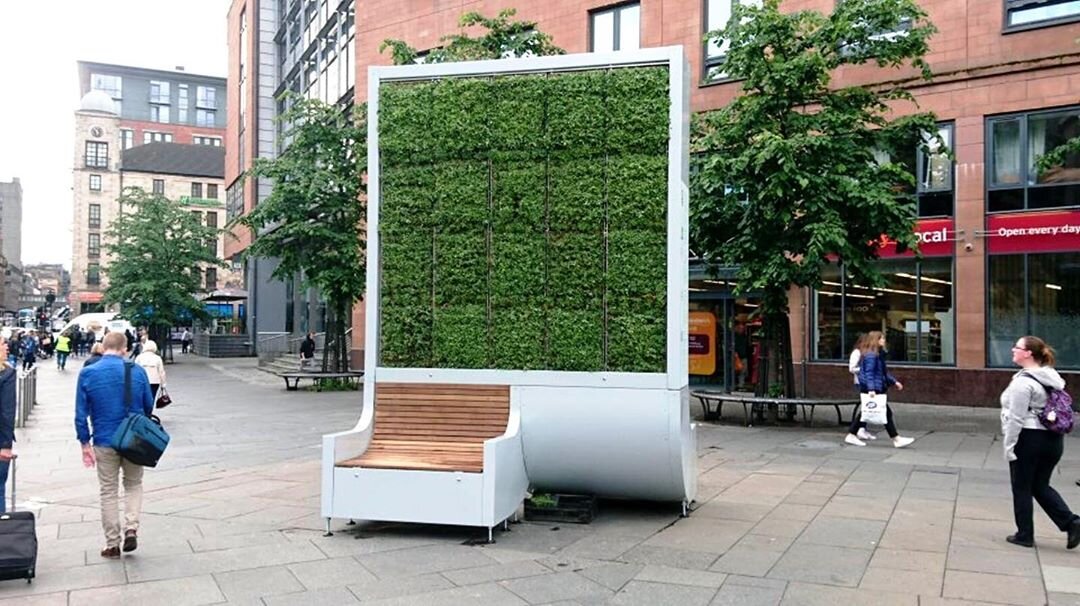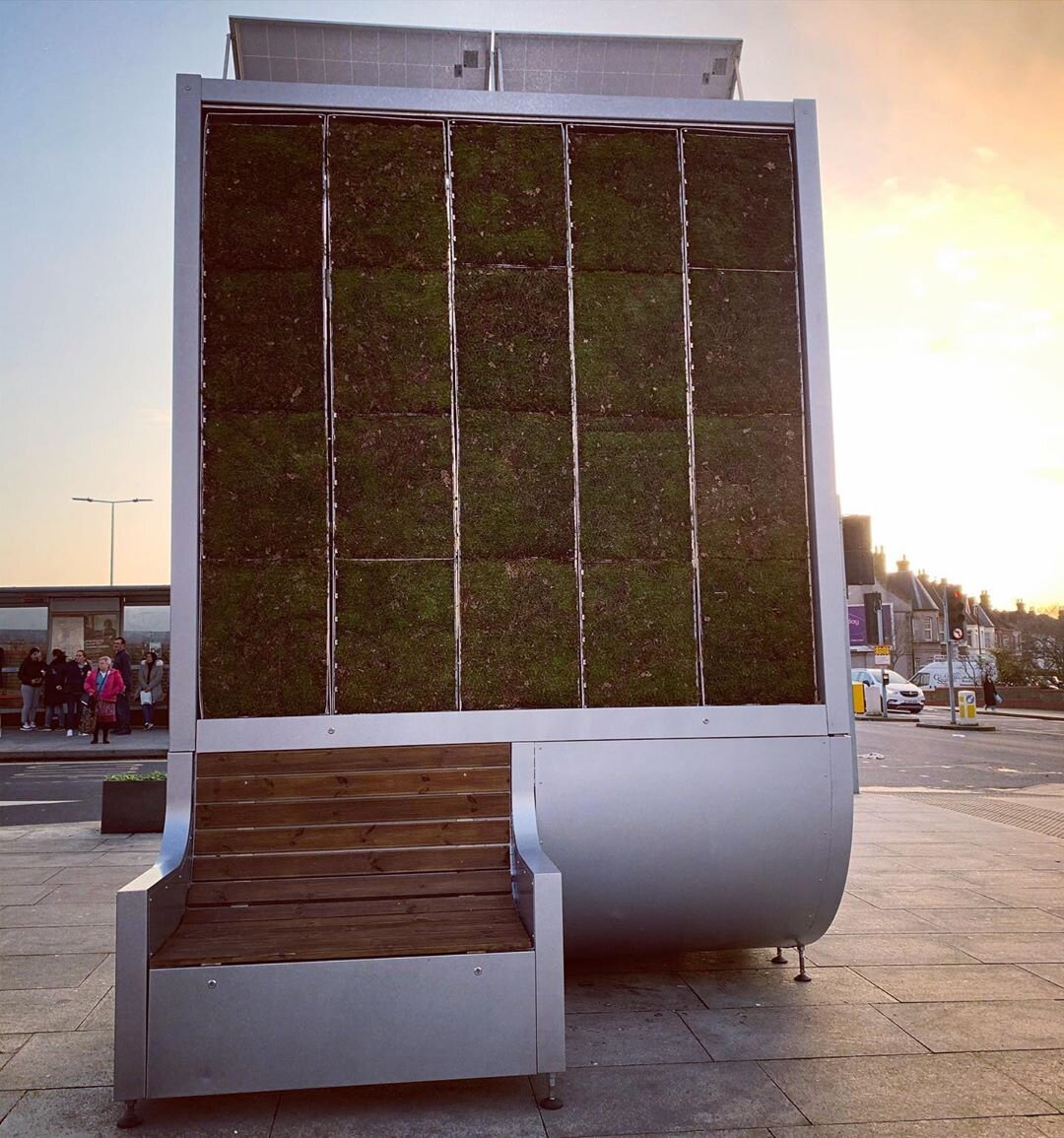"City trees" - digitally networked walls of moss - can do the air-cleaning job of 275 trees. But let's not make it either/or...



What’s a city-tree? As opposed to a normal tree? And should cities have more normal trees than city-trees?
To the left are some pictures of actual city-trees, currently doing their thing in the London suburb of Leytonstone (the third slide is projection of a Berlin project, launching in March). According to the Secret London website, they are “a series of CO2-filtering structures”:
Useful as they are, calling the City Trees ‘trees’ is a bit of a misnomer. They’re actually towers filled with different types of moss, which eat up particulates and nitrogen oxides whilst simultaneously producing oxygen.
The City Trees include their own irrigation and energy systems that allows them to operate whatever the weather, and also collect data about the surrounding environment, which can then be used to inform further green solutions.
Each moss tower has the air-cleaning capability of 275 regular trees, making them an extremely powerful tool for improving air quality, especially in polluted areas where it wouldn’t be possible to plant such a large number of trees.
Another handy benefit – especially given the scorching July we had last year – comes from the mosses’ ability to store large amounts of moisture, which keeps the surrounding air cooler.
More from Time Out. The manufacturer’s own website, Green City Solutions, describes the science and tech this way:
The ability of certain moss cultures to filter pollutants such as particulate matter and nitrogen oxides from the air makes them ideal natural air purifiers.
But in cities, where air purification is a great challenge, mosses are barely able to survive due to their need for water and shade.
This problem can be solved by connecting different mosses with fully automated water and nutrient provision based on unique Internet of Things technology. Air filtering performance is quantitatively proven and the plants’ requirements are measured in real time.
That’s how the CityTree came into being – the world’s first bio-tech filter to quantifiably improve air quality.
It’s hard to argue with the capacity of these technologies to process pollutants. And given the health disasters that urban traffic produces - air pollution from cars projected to cause more than 160,000 deaths in the UK by the end of the 2020s - it’s all hands on deck.
Yet the sight of these odd, minimally-civic street-corner radiators screams “techno-fix” to our eyes. They perhaps evade and undermine ambitions to green our cities with massive tree-planting campaigns, which have become pretty mainstream—see the Daily Mail and Jony Ive. As the master aesthete himself says:
Apple Park’s orchards and parkland (Daily Mail)
Trees are profoundly good for learning and creating… I love trees and over the years have climbed them, eaten and fallen from them, and planted as many as I can.
I love sitting in their shade. One of the ideas that was fundamental to Apple Park’s design was creating acres of parkland and orchards. Being able to contribute to a project so close to my heart is fabulous.
Well, if proximity to trees and orchards is good enough for Apple’s design guru, it’s good enough for us. We’ve run many stories over the years on the benefits that trees - as organisms that refresh our conditions, and shelter our souls - bring to productive or urban environments. Let’s hope these “city-trees” don’t get commercial and civic leaders off the hook of planting them.


